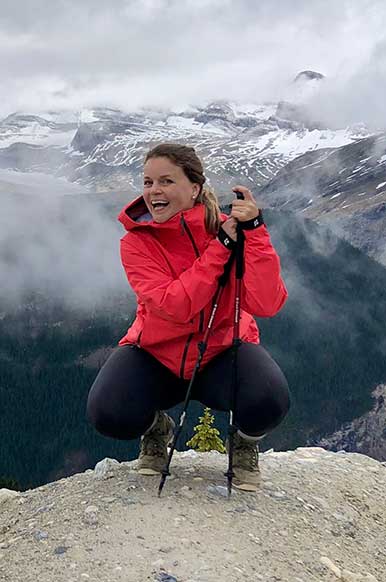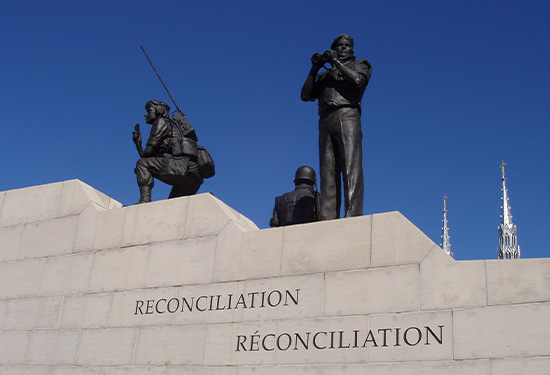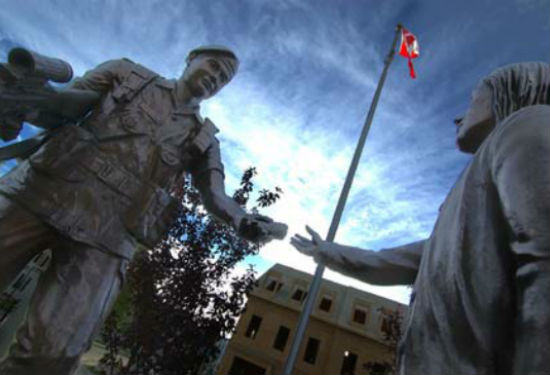Members of the Canadian Armed Forces have served in many parts of the world on international peace missions over the years. Few of them have been as far away from home as those deployed to the Southeast Asian country of East Timor.
In fact, only 650 Canadian Armed Forces personnel and a group of more than 15 Canadian civilian police officers served in the country.
Canadian personnel were in East Timor from 1999 to 2001. They first participated in a United Nations (UN) – sanctioned multinational peace-enforcement mission. They then took part in a UN-administered effort to help restore peace and security in the country.
East Timor stories
Season 4: Canada’s Peacekeepers - Faces of Freedom Podcast - Veterans Affairs Canada (Episode 3 - Kerry Mould Podcast)
The tropical country of East Timor—or Timor-Leste since 2002—is located on the island of Timor, several hundred kilometres north of Australia. It is a mountainous land with an area of about 15,000 square kilometres, which makes it about three times the size of Prince Edward Island. It has a largely-rural population of more than one million people.

Master Corporal Marco Duchesne on patrol in the village of Zumalai, tries to communicate with kids. 30 October 1999. Photo: Department of National Defence ISD99-435A
The road to independence
East Timor had a long and violent struggle before reaching independence.
In the 1970s, East Timor began to move away from being a colony of Portugal. There was controversy over whether the territory should become an independent country or become a part of nearby Indonesia. In late 1974, the Indonesian military launched a secret operation to take over East Timor.
In 1975, a civil war started. Thousands fled the territory for the neighbouring Indonesian province. One of the main groups in the fighting declared independence for East Timor. In 1976, Indonesia invaded and took over the territory. They ignored UN resolutions supporting the right of the East Timorese people to self-determination, and made it a province of Indonesia in 1976. In the years following the invasion, armed resistance against the Indonesians, forced resettlement, and famine led to the deaths of more than a hundred thousand people in East Timor.

Sergeant Robyn Bédard on patrol in the village of Zumalai. 30 October 1999. Photo: Department of National Defence. ISD99-474A
Despite years of UN diplomatic efforts, East Timor would not be able to reassert its independence until 1999. When Mohammad Suharto, the long-time dictator of Indonesia, resigned the political situation in the country finally changed. The UN supervised a vote for the people of East Timor to decide whether it should remain a part of Indonesia (but with special autonomy) or begin the process of becoming independent. The citizens overwhelmingly opted for independence. Unfortunately, this set off further conflict in the territory. Pro-Indonesian militias, at times supported by the Indonesian military, burned homes, killed civilians and created unrest. More than 500,000 to 700,000 people in East Timor were displaced. Even members of the UN assistance mission there were attacked.
UN response
With international pressure growing for Indonesia to stop the violence, East Timor accepted help from the UN.
An Australian-led multinational force (which included Canada) went to East Timor in 1999 to help restore peace and security. They protected and supported the existing UN mission in carrying out its tasks, and helped with humanitarian aid. At its peak, the UN mission there would include more than 10,000 peacekeepers, including civilian policemen.

Soldiers from the Canadian Contingent, formed mainly from the 3rd Battalion Royal 22e Régiment and engineers of the 5th Combat Engineer Regiment, unload onto Suai beach in East Timor. 29 October 1999. Photo: Department of National Defence ISD99-457A
Canada’s contributions
Canada's main contributions came at the beginning of these efforts in late 1999. Canada sent HMCS Protecteur, an infantry company, and transport planes to support the mission. Canadian Armed Forces members went to the region to provide security, construct a camp, repair local facilities, keep the naval task force supplied. They also helped with humanitarian aid and nation-building projects.

Sergeant Robyn Bédard, recce platoon, on patrol in the village of Zumalai. 30 October 1999. Photo: Department of National Defence ISD99-473A
The 3rd Battalion, Royal 22e Régiment (the Vandoos) contributed 250 soldiers to the Canadian force. Their main role was to patrol a large territory from Ainaro in the east to Suai in the west. They also repaired a school and hospital, helped with sanitation needs, gave out clothing and containers, and taught basic English.

A Canadian Armed Forces helicopter delivers supplies in East Timor. Photo: Department of National Defense.
A big part of Canadian efforts was the work of the Canadian Airlift Task Force. It was made up of two Hercules aircraft and more than 100 personnel. Between September and November 1999, Canadians moved about one million kilograms of cargo and more than 2,000 passengers between Australia and East Timor. Also, the Sea King helicopters based on the HMCS Protecteur flew many supply missions from the ship to different places ashore. After these initial contributions, the Canadian Armed Forces efforts in East Timor were scaled back.
Conflict coming to an end
The political situation improved with the presence of the international peacekeepers. The new Indonesian government recognized the independence of East Timor, withdrawing its troops and its political claim to the area. East Timor held democratic elections and finally became an independent country in 2002. UN forces remained until May 2005 to help maintain the country's security as it made the hard-won transition to full nationhood. However, further unrest the following year resulted in UN peacekeepers returning to East Timor for a mission that would run until December 2012.
- Date modified:





















